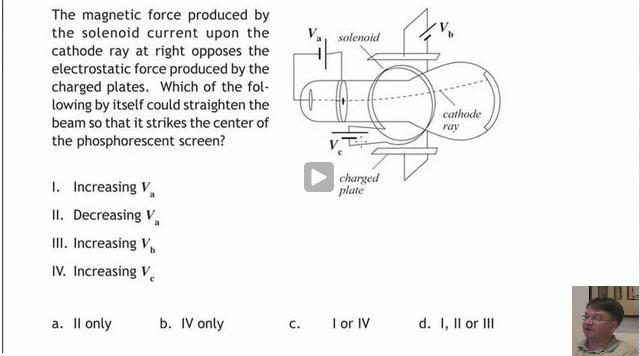- Joined
- Dec 1, 2011
- Messages
- 18,577
- Reaction score
- 57
Ok I have a few questions about this figure.

1. How do you know the top plate of Vb is the positive plate, besides the fact that the cathode ray deflects toward it?
Ok, I guess just one question. Thanks.

1. How do you know the top plate of Vb is the positive plate, besides the fact that the cathode ray deflects toward it?
Ok, I guess just one question. Thanks.
